Lunar Leap
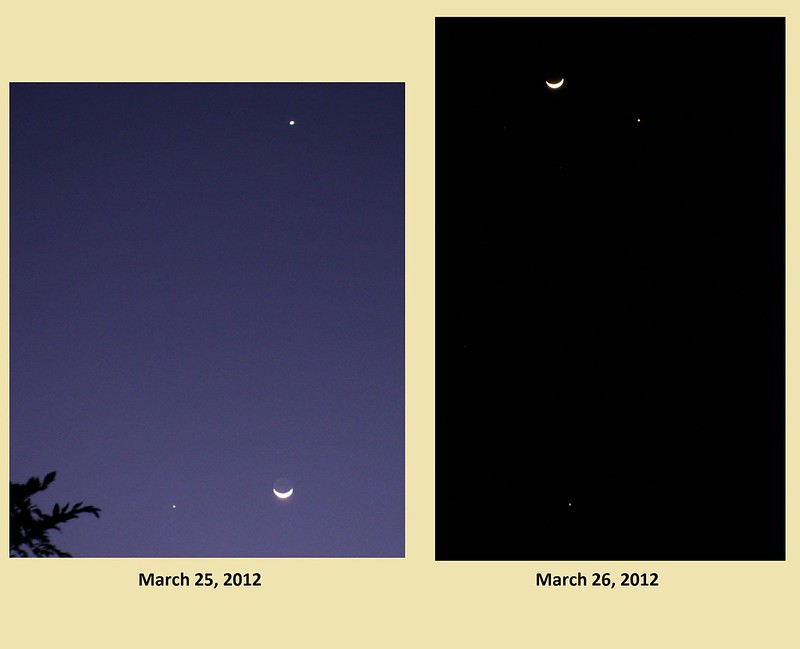
Large
For three days the crescent Moon joined Jupiter and Venus. We were rained out on March 24, when the Moon appeared below the two planets. On March 25, the Moon appeared beside Jupiter (photographed at 8:01 p.m. Eastern, 0.6-second exposure at f3.5, with some tweaks in gamma and contrast). On March 26, it appeared by Venus (photographed at 8:34 p.m. Eastern, 1/2 second exposure at f6.3).
Taken from the end of my block, March 25 at 8:04 p.m. Eastern, 0.6-second exposure at f3.5 (with tweaks in gamma and contrast):
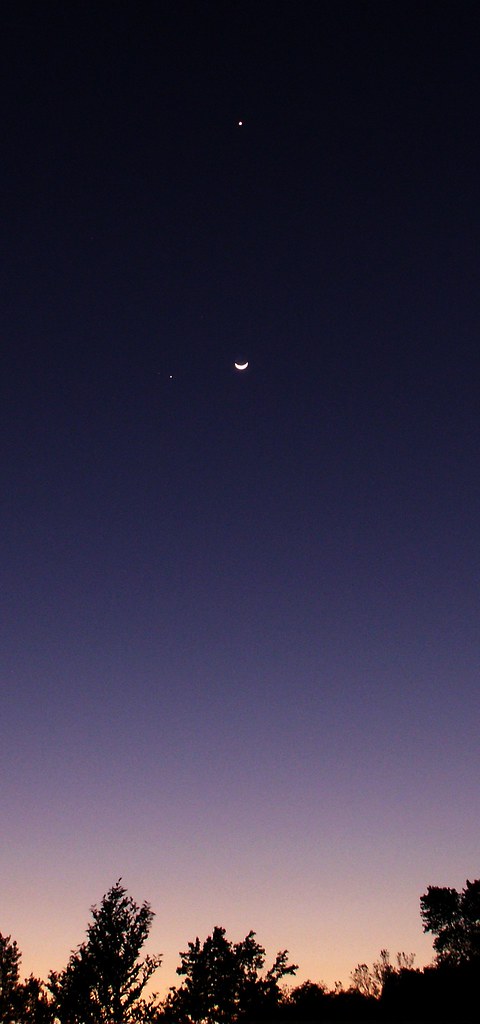
Large
March 26 at 8:01 p.m. Eastern, 1/2 second exposure at f4.5:
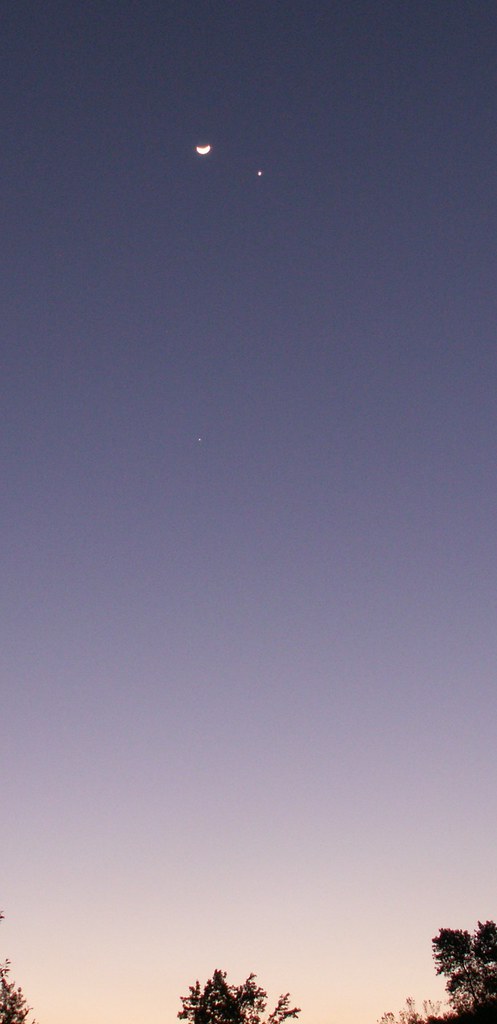
Large
The Moon (with Earthshine) and Jupiter, March 25, photographed at 8:20 p.m. Eastern, 4-second exposure at f4.5:

Large
The Moon and Venus, March 26. First photographed at 7:30 p.m. Eastern at 1/250 second, f4.5. Then photographed (the Moon with Earthshine) at 8:38 p.m. Eastern, 4-second exposure at f4.5.

Large
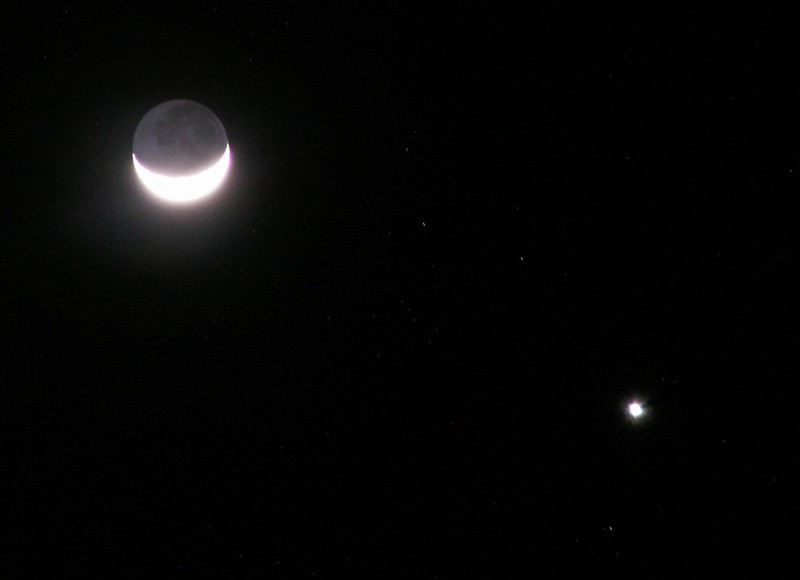
Large
Keith Cooley explains that Earthshine "is caused by sunlight that reflects off the Earth onto the Moon's night side. Under the earthshine, the Moon's outline and its dark features can be seen, even though only a thin crescent is bright. We see the Moon because of reflected sunlight (the Moon does not generate its own light). At times, however, the dark part of the Moon glows."
This photo series tracks the movements of Jupiter, Venus, and the Moon from March 10 through March 26:
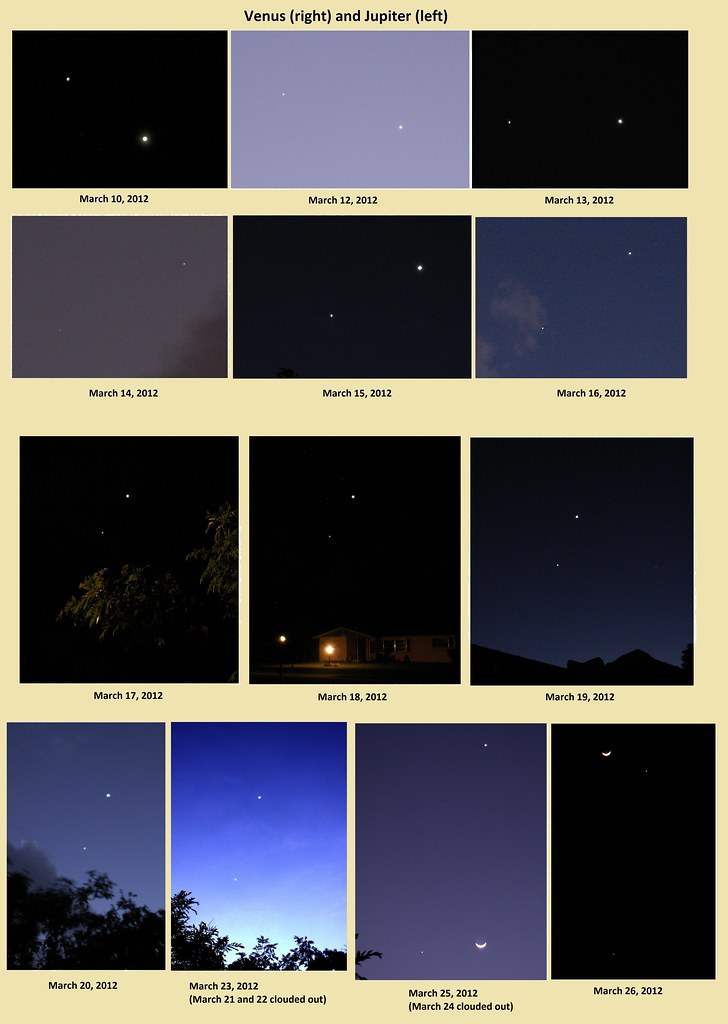
Large
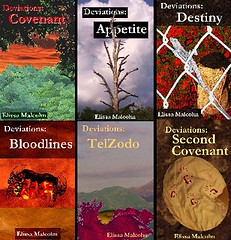











0 Comments:
Post a Comment
<< Home